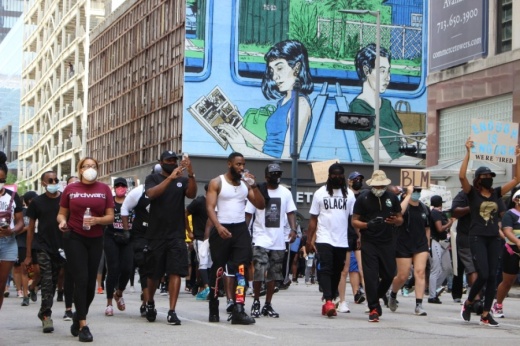1. What makes recent BLM protests different than past waves related to the BLM movement? Will we keep up the momentum this time?
Recent BLM protests are not different than past waves related to the movement. These protests are the same as they have always been: red-hot in the moment and sizzling out shortly thereafter. White supremacy adapts but is not diminished. White privilege is exposed but not undermined. Blacks cling to the hope that things will change. Well-meaning whites offer pleasantries and platitudes about working toward racial justice. The recent momentum will not be sustained but will last longer than usual because of the COVID-19 pandemic, which, ironically, is decimating Black, brown, and American Indian communities.
2. The recent protests sparked by police brutality against Black people have brought awareness to the wider institutionalized systems perpetuating racism, such as housing and wealth-building, public health, education, and criminal justice. How can we begin to break the cycle?
The cycle of disadvantage is a function of the legacies and contemporary operation of white supremacy. If the cycle could have been broken, then it would have been broken by now. Institutions, including schools, universities, the police, prisons, hospitals and banks, are not malfunctioning but are working just as they were intended to work such that education, health, incarceration and wealth disparities endure and grow. Unless we are willing to tear down and rebuild the system, then institutions will continue to manufacture inequality and consent. Think about this analogy regarding U.S. paper currency. It is actually cotton—think chattel slavery—and on it are printed the faces of slaveowners because 12 of the first 18 U.S. presidents were slaveowners, and eight owned slaves while in office. Our country’s very foundation is racism.
3. What educational resources are lacking from the training of police officers across the country? What is the best way to begin preventing police brutality against Black people?
There are no educational resources lacking from the training of police officers across the country. And, for the record, the few bad apples or implicit bias explanations ignore systemic racism. Police officers are agents of the state. They protect the interests of those with power. Until power is more evenly distributed, police brutality will plague the Black community. More important, violence and racial terrorism will plague the Black community. The list of Black men and men and children murdered by the police pales in comparison with the list of black men and women and children murdered because of racism—innumerable African slaves, Nat Turner, Emmett Till, Medgar Evers, MLK, Jr., Kalief Browder, Trayvon Martin, Ahmaud Arbery and on and on and on.
4. Can you speak a little about the findings of your research—in the context of BLM—highlighting that race is socially constructed and represents shared experiences, attitudes and beliefs?
Some social scientists mistake the study of race with the study of racism. They can tell you about racial categories and processes of race-making, but cannot explain what causes education, health, incarceration and wealth disparities. They experience paralysis when it comes to naming racism and demonstrating how it causes and sustains disparities. They are social scientists who tend to minimize the significance of white supremacy. When white supremacy is minimized, then the context and rationale for arguing that Black lives matter is similarly minimized.
5. What is racial trauma?
Racial trauma is a firsthand or vicarious experience, far beyond the scope of routine human interactions, where Black individuals and communities face their own destruction because of racism. For example, the Tulsa Race Riots of 1921 would be a racial trauma. Imagine being present then and watching racial terrorism consume your livelihood and threaten your life. As another example, imagine being trapped on the roof of a house in the lower Ninth Ward [in New Orleans] after Hurricane Katrina made landfall and the levees failed. You realize at that moment most white people do not care about your life. As another example, imagine being present or watching a video where, for 8 minutes and 46 seconds, four police officers murder George Floyd, despite his cries for mercy. Racial trauma lingers. It is an incurable mental health problem. You are never the same after an experience of it. It is intergenerational and debilitating and demoralizing in its impact. My current research suggests 25% of Blacks experience racial traumas, making it a serious and neglected public health issue.
6. Is there anything else you would like to add?
During times when white supremacy shows its true form, hope becomes addictive. I would encourage individuals who care about social and racial justice to abandon hope and embrace truth. The truth is that protests are not filled with older people—not because they do not care, but because they have watched white supremacy adapt and the apathy of well-meaning whites fester for much too long. The truth is that the system is broken and must be rebuilt. The truth is that racism will murder another Black man or woman or child tomorrow, or the next day. The truth is that racism is not only embedded in the hearts and minds of some whites; more important, it is embedded in institutions.





